
Shitennoji Temple
Aries LuceaA trip to the Shitennoji temple brings you back to the roots of the country's religion.

Shitennoji Temple in Osaka is regarded as one of Japan’s oldest official temples and the first to be financially supported and constructed by the country. The Buddhist temple was founded in 593 by Prince Shotoku and dedicated to the Shitenno, the four heavenly kings of Buddhism. The temple’s structures burned down multiple times throughout history, but were always accurately rebuilt, staying true to the original design.
Today, you can enter the outer temple grounds for free and admire the sacred buildings. To visit the Chushin Garan or inner-temple complex, Treasure House, and Gokurakujodo Garden, you will have to pay a small fee.
The Chushin Garan is home to Shitennoji’s most iconic buildings—the Kondo (Main Hall) and five-story pagoda. Both structures are truly mesmerizing with traditional vermillion coloring against white and green accents. Climb up the pagoda for a unique perspective of the temple grounds. Entrance to the Chushin Garan is 300 yen for adults, 200 yen for high school and college students, and free for children.
The Treasure House is an intriguing place for history lovers as it displays Buddhist scriptures, statues, paintings, and artifacts. Admission is 500 yen for adults, 300 yen for high school and college students, and free for children.
One of Shitennoji’s most tranquil areas is the Gokurakujodo Garden, which was modeled off the mythical Western Paradise of the Amida Buddha. The garden is characterized by ponds, rock waterfalls, cherry blossoms, and stone lanterns, creating a wonderful zen oasis in bustling Osaka. Unwind with a stroll along the water and enjoy the seasonal foliage. The area is also known for its abundance of basking turtles! The garden’s admission fee is 300 yen for adults, 200 yen for high school and college students, 200 yen for elementary and middle school students, and free for kindergarten students.
On January 14, Shitennoji celebrates the Doya Doya Festival. During this lively event, young men dressed in traditional undergarments run into the Rokujireisando prayer hall as they are doused with cold water and compete to grab the most paper charms, which are dropped from the ceiling.
If you are in the area on the 21st or 22nd of the month, be sure to stop by the temple for the Shitennoji Flea Market between 8:00 and 16:00. Peruse the roughly 300 stalls and enjoy delicious street foods such as takoyaki and okonomiyaki!
Shitennoji is about a 3-minute walk from Shitennoji-mae Yuhigaoka Station and a 10-minute walk from JR Tennoji Station.

A trip to the Shitennoji temple brings you back to the roots of the country's religion.
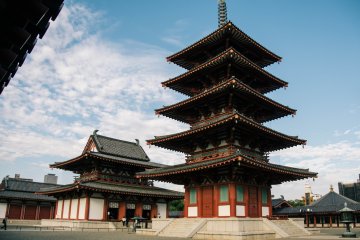
Established in the Seventh century by Prince Shotoku, Shitennoji is Japan's first and oldest officially administered Buddhist temple. Although having been burned down over the years it was carefully reconstructed back to its original form. As you walk around the grounds you get a sense that this was an old center for the welfare of the community. The quiet peaceful atmosphere creates a great space to immerse in the temple's history. Apart from the main temple there are also 4 institutions established here, requested by Prince Shotoku to promote an organized social welfare, being the Keiden-in (Institute for Religion), Ryobyo-in (Hospital), Hiden-in (Welfare institution), Seyaku-in (Pharmacy).
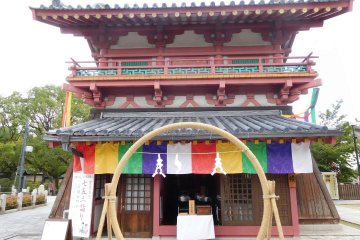
Get out of the bustle and the chaos of Tennoji and explore one of Japan's oldest temples and its lasting symbol of Buddhism - Shitennoji Temple Osaka.
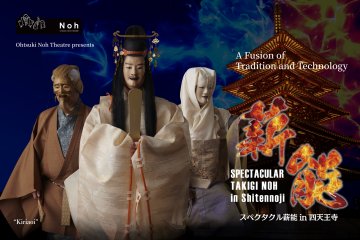
A two-day event in which Noh, the world’s oldest active theater tradition, is combined with projection mapping to create a one-of-a-kind and immersive viewing experience.
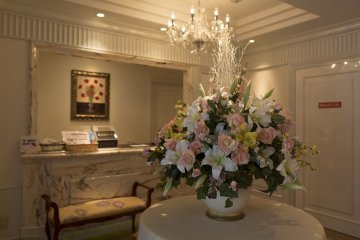
Peace and quiet is what makes the perfect hotel for some. If this is an important trait for you then opting for an adults only hotel may be something you’d like to consider.

In the midst of the modern face of Tennoji is Miyako Hotel, part of the Miyako group which has sister hotels in the parklands of Kyoto and Tokyo.

Sheraton Osaka is an understated hotel with top notch service and swimming pool between Namba and Tsuruhashi. There are direct buses to Osaka Itami Domestic Airport as well as Kansai International Airports, as well as trains to Nara and Osaka.

Marufuji Sweets and Cafe is a modern yet retro cafe. The main store in Uehommachi has a more elegant atmosphere, while the branch store in Tennoji reflects the Shitamachi roots of this no-nonsense part of Osaka. Set in a back lane close to Tennoji station, it is close enough to be convenient, but far enough from the crowds to be comfortable.The back lane gets very little vehicular traffic adding to its old world charm. They serve lunch and light meals to the early evening, as well as desserts and coffee and tea.
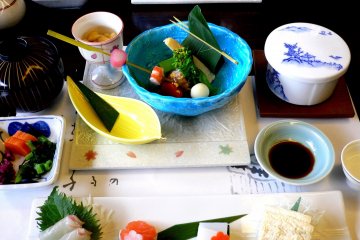
Eat in authentic local eatery and join Ms Watanabe and her friends in a comfortable family friendly restaurant.

Apop-up cafe event dedicated to the K-Pop band Seventeen is taking place in Osaka, as well as several other locations across Japan. The event will have a variety of eats, drinks, and desserts on offer, plus Seventeen merchandise available for purchase.
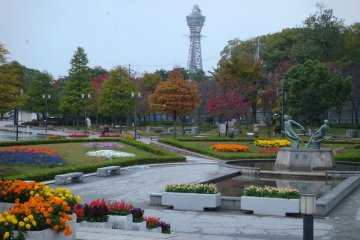
Tenshiba is the entrance area to Tennoji Park, which was converted into a free recreation area for the people of Osaka in October 2015. It is laid out around an extensive lawn and surrounded by a variety of recreational facilities for the local population. In the shopping area there is Cafes, restaurants and a farmers market, and there is also a children's playground and a futsal court. There is also an animal park nearby, the Tennoji Zoo. In 2016, the redesigned park won one of Japan's annual Good Design Awards. Entrance is completely free and a free WiFi network is also offered to visitors.
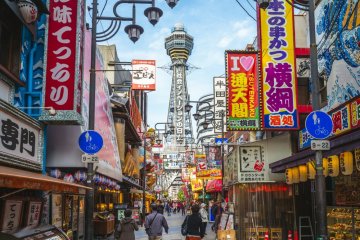
Tsutenkaku Tower, standing at 103 meters tall, is an unmistakable symbol of Osaka and located in the Shinsekai area. The towering 8-sided structure’s facade is characterized by its exposed steel beams and Eiffel Tower-esque appearance. Visitors and residents alike flock to its observation deck for stunning panoramic views of the area. History Tsutenkaku, originally built in 1912 at 63 meters tall, was renowned for its impressive height, making it one of the tallest structures in Asia at the time. The structure’s appearance was modeled after famous French architecture, with the tower portion matching the Eiffel Tower and the base reminiscent of the Arc de Triomphe. The tower was erected as a centerpiece of the bustling area and was attached to the popular amusement park, Luna Park, via a cable car. Unfortunately, the tower was damaged in 1943 by a fire and later dismantled for its steel during WWII. Years later in 1956, after locals campaigned for a new tower, the current Tsutenkaku was constructed at a taller 103 meters tall and designed by famous architect Tachu Naito, who also designed Tokyo Tower. You can view photos, videos, and a diorama of the original tower and Luna Park on Tsutenkaku’s third floor. Today Presently, Tsutenkaku stands as a beacon of the lively area and is a must see spot if you are visiting the Shinsekai. During the day, the structure stands silver against the sky, while at night it shines bright neon thanks to its numerous LED lights that change color with the seasons. The tower is open year-round from 10:00 to 20:00 with admission until 19:30. General observatory tickets cost 900 JPY for adults (high school students and above) and 400 JPY for infants 5 years old and over and junior high and elementary school students. For an additional 300 JPY (adults) or 200 JPY (children and young adults), you can visit Tenbo Paradise and Tip The Tsutenkaku. Listed below are some highlights to help guide your adventures. Explore the Surrounding Area While in the area, be sure to check out the Shinsekai neighborhood for its local wares, delicious eats, and lively atmosphere. Stroll along JanJan Yokocho (JanJan Alley), a covered shopping street, and enjoy the clothes stores, arcade games, and kushikatsu restaurants, which are known for their fried skewers of breaded meat and vegetables. The street is also populated by multiple Shogi, Japanese chess, salons. For a break from the bustling Osaka streets, visit nearby Tennoji Park for a relaxing walk.
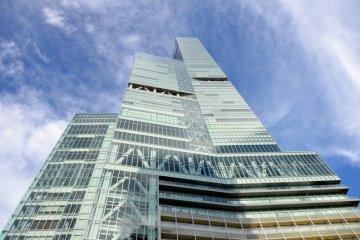
The Abenobashi Terminal Building is located in Abenosuji Itchome, Osaka City. The building is a commercially used multifunctional building and not only houses numerous shops, but also a hotel and the Sharp Cooporation's sales office. The name of the skyscraper is Abeno Harukas, which is derived from the old Japanese word Harukatsu and means to brighten or clear. Construction of the building began in 2010 and it opened on March 7, 2014. With a height of 300 meters and 62 floors, the Abenobashi Terminal building is the tallest skyscraper in Japan and when all floors are taken together it has a walkable area of approximately 100,000 square meters.